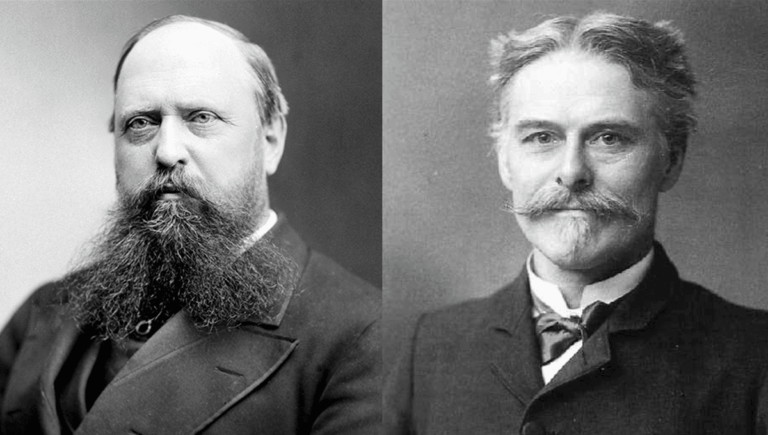in 19 yearsth century, the discovery of dinosaurs sparked one of the most heated and ridiculous fights ever seen between two scientists. Although both bone hunters were ultimately destroyed by intense competition, their research led him to discover over 100 species of dinosaurs. Stegosaurus, brontosaurusand triceratops – and helped lay the foundation for our current understanding of dinosaurs.
The Bone Wars revolved around the competition between Edward Drinker Cope and Othniel Charles Marsh in a quest to find and name the most dinosaur fossils in the American West at the end of the 19th century. In an ego-driven effort to make their mark on history, the two resorted to dirty tactics to undermine each other, including bribery, espionage, theft, and breaking bones.
However, their relationship was not always hostile. The two first met while she was studying paleontology in Germany in the early 1860s, where they appeared to enjoy a thoroughly pleasant friendship. They even named some of the newly described species after each other.After Cope names amphibian fossils Ptionius Marsii In Marsh’s honor, he returned the favor by naming him after an extinct marine reptile. Mosasaurus copeanus.
When the two returned to the United States, things took a turn for the worse. In 1868, Cope showed Marsh around a fossil quarry in Haddonfield, New Jersey. Marsh, behind Cope’s back, paid quarry owners to send new fossil discoveries to the offices of Yale’s Peabody Museum of Natural History, founded by Marsh’s wealthy uncle, George Peabody. (I wonder if he got a job.)
Another nail in the coffin of this friendship was put in 1868 when Cope published his research on a newly discovered extinct marine reptile. Elasmosaurus platurus. Rather embarrassingly, he completely misunderstood the animal’s anatomy, effectively placing the skull at the end of the tail.
After Marsh pointed out the error, Cope attempted to purchase all known copies of the Journal of the American Philosophical Society that contained the error. But it was already too late. Marsh later wrote, “When I informed Professor Cope of this, it was such a shock that his wounded vanity never recovered, and he has since become my bitter enemy.”
The advent of the Transcontinental Railroad opened up the American West and provided Marsh and Cope with a perfect playground for their work. The two men separately excavated and described a number of important paleontological discoveries at this time, which they rushed to publish in scientific journals in hopes of gaining an advantage over the other.
Marsh often threw cold water at Cope’s paper, saying it revealed nothing new or special. To gain an advantage in the rush to publish his paper, Cope even brought in the American Naturalist magazine.
Tensions reached a high point in 1877 when railroad workers discovered dinosaur fossils at Como Bluff, near the town of Medicine Bow, Wyoming. It quickly became apparent that the site contained a large number of incredibly well-preserved fossils of a large number of dinosaurs.
Marsh received word of the discovery and immediately dispatched an army of miners to investigate. By December 1877, Marsh had described and named numerous dinosaurs at the site. stegosaurus, allosaurusand Apatosaurus.
However, Cope also heard the news and sent his men to the area to establish his own quarry. The camps were a stone’s throw from each other and very close to rival crews.
People were accused of spying on behalf of the other side, with reports of fist fights and stones being thrown between the two sides. Mr. Cope even accused Mr. Marsh of crushing the remaining fossil footprints to prevent a rival team from recovering information, and Mr. Marsh accused Mr. Cope of trespassing.
If anyone can claim to have won the Bone Wars, it’s definitely Marsh. Cope fell on hard times and wasted a lot of money on silver mines in New Mexico, but eventually went bankrupt. Meanwhile, Marsh earned a position as chief vertebrate paleontologist at the U.S. Geological Survey.
In the end, however, both men died alone, penniless and leaving behind somewhat dubious legacies. Their selfish pursuit of glory ultimately uncovered a plethora of important insights about dinosaurs and extant reptiles, but their childish antics led to the development of the emerging field of paleontology. It didn’t make for great PR.
This story also shows that science, despite its promises of objectivity and rationality, is ultimately a human endeavor carried out by imperfect people with their own egos, insecurities, and biases. It reminds me of that. Being a good scientist doesn’t necessarily mean you’re a good person.
